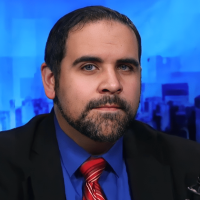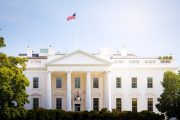
California governor and potential 2024 Democratic presidential candidate Gavin Newsom announced the launch of his “Campaign for Democracy” to propose a 28th amendment to the U.S. Constitution for gun control by way of an Article V constitutional convention.
Amendments to the U.S. Constitution can be proposed in one of two ways. First, Congress, whenever two thirds of both Houses shall deem it necessary, shall propose amendments. This is how all 27 amendments to the Constitution, including the first ten (the Bill of Rights), were proposed. The second, never-before-used way is for two-thirds of the states (34 out of 50) to make application to Congress, who in turn will call a constitutional convention to propose amendments. Article V of the U.S. Constitution says, in part:
The Congress … on the Application of the Legislatures of two thirds of the several States, shall call a Convention for proposing Amendments, which … shall be valid to all Intents and Purposes, as Part of this Constitution, when ratified by the Legislatures of three fourths of the several States, or by Conventions in three fourths thereof, as the one or the other Mode of Ratification may be proposed by the Congress.
“Our ability to make a more perfect union is literally written into the Constitution,” Newsom said in a video released on Thursday. “So today, I’m proposing the 28th Amendment to the United States Constitution to do just that.” This proposed constitutional amendment would implement “common sense” gun-control measures, which many conservatives and constitutionalists argue are unconstitutional due to the Second Amendment.
For example, last year, in New York State Rifle & Pistol Association, Inc. v. Bruen, the Supreme Court delivered a historic 6-3 ruling striking down New York State’s Sullivan Act from 1911. This century-old law required any applicant for a concealed-carry pistol license in New York to demonstrate “proper cause” for wanting to do so.
“We know of no other constitutional right that an individual may exercise only after demonstrating to government officers some special need. That is not how the First Amendment works when it comes to unpopular speech or the free exercise of religion. It is not how the Sixth Amendment works when it comes to a defendant’s right to confront the witnesses against him. And it is not how the Second Amendment works when it comes to public carry for self-defense,” Justice Clarence Thomas wrote in the Court’s majority opinion.
Newsom’s 28th amendment would permanently enshrine the following four provisions in the Constitution:
- Raise the minimum age to purchase a firearm from 18 to 21;
- Mandate universal background checks;
- Institute waiting periods for all firearm purchases; and
- Ban civilians from purchasing so-called “assault” rifles.
“This fight won’t be easy and it certainly won’t be fast. Convening a constitutional convention requires two-thirds of the states to call for this,” Newsom says, before predicting that “California will be the first.” He ends the video calling on viewers to go to CampaignforDemocracy.com and sign a petition in support of the 28th amendment.
However, Newsom isn’t the first to suggest an Article V convention to upend the Second Amendment.
Gunning for the Second Amendment
In 2019, Democratic lawmakers in Hawaii introduced two identical resolutions in the Hawaii Senate urging Congress to propose a constitutional amendment to either repeal or clarify the Second Amendment. Hawaii state senators Stanley Chang (D-9), Karl Rhoads (D-13), Rosalyn Baker (D-6), Dru Kanuha (D-3), and Laura Thielen (D-25) introduced Senate Resolution 29 and Senate Concurrent Resolution 42, both of which conclude by saying:
BE IT RESOLVED by the Senate of the Thirtieth Legislature of the State of Hawaii, Regular Session of 2019, the House of Representatives concurring, that the United States Congress is urged to propose and adopt a proposed amendment to the United States Constitution pursuant to article V of the United States Constitution to clarify the constitutional right to bear arms; and
BE IT FURTHER RESOLVED that the United States Congress is requested to consider and discuss whether the Second Amendment of the United States Constitution should be repealed or amended to clarify that the right to bear arms is a collective, rather than individual, constitutional right.
The resolutions underscore the serious threat to the Second Amendment posed by liberal legislators across the country. Seven years earlier, in 2012, Hawaii lawmakers introduced House Concurrent Resolution 114, a radical constitutional convention application that sought, among other far-left proposals, to repeal the Second Amendment. HCR 114 proposed ratification of the following changes to the Constitution:
(1) The repeal or modification of the Second Amendment to strengthen firearms restrictions;
(2) A declaration of the constitutionality of the federal Patient Protection and Affordable Care Act, including the individual mandate requiring the purchase of health insurance;
(3) An amendment to Article I, Section 5, to prohibit the supermajority cloture requirement under Rule 22 of the United States Senate for ending floor debates and filibusters, to facilitate a more reasonable voting standard for cloture;
(4) An amendment abolishing the electoral college established under Article II, Section 1, and providing for the direct election of the United States President and Vice President by voters; and
(5) An amendment to Article II, Section 2, Clause 2, to require that Senate confirmations of appointments of officers of the United States be made by a simple majority vote within sixty days of the nomination….
BE IT FURTHER RESOLVED that this Concurrent Resolution constitutes a continuing application in accordance with Article V of the United States Constitution until at least two-thirds of the legislatures of the several states have made application for a constitutional convention that is limited to consideration of the amendments to the United States Constitution enumerated in this Concurrent Resolution. [Emphasis added throughout.]
Fortunately, HCR 114 failed to pass in 2012, and both SR 29 and SCR 42 died in committee in 2019. So, if the California state Legislature rubber-stamps Gov. Newsom’s request, it will be the first state to make an application to Congress for a constitutional convention to propose a far-reaching gun-control amendment.
Another well-known liberal voice to target the Second Amendment was the late Supreme Court Associate Justice John Paul Stevens. In his book Six Amendments: How and Why We Should Change the Constitution, published in 2014, Justice Stevens also took a shot at the Second Amendment, proposing that it be changed to read as follows: “A well regulated Militia, being necessary to the security of a free State, the right of the people to keep and bear Arms when serving in the militia shall not be infringed.” (Emphasis added.)
The addition of these five words would essentially allow for the criminalization and disarming of law-abiding citizens unless they are serving in the “militia,” which Stevens and others on the left narrowly define as the National Guard. This is contrary to the historical definition of the militia, which was made up of average citizens who were expected to own a firearm in the event they were asked to defend and fight for their country, as many Colonists did during the War of Independence, serving in various militias in addition to the regular Continental Army and Navy.
A little over a year before he passed away in 2019, Stevens wrote an op-ed, published in The New York Times on March 27, 2018, in which he went even further, calling for outright repeal of the Second Amendment. Referring to the “March for Our Lives” corralled student demonstration for radical gun control, Stevens said:
These demonstrations demand our respect. They reveal the broad public support for legislation to minimize the risk of mass killings of schoolchildren and others in our society.
That support is a clear sign to lawmakers to enact legislation prohibiting civilian ownership of semiautomatic weapons, increasing the minimum age to buy a gun from 18 to 21 years old, and establishing more comprehensive background checks on all purchasers of firearms. But the demonstrators should seek more effective and more lasting reform. They should demand a repeal of the Second Amendment.
In his quest for relevancy a little over 14 months before the 2024 Democratic National Convention meets in Chicago to officially select its party’s presidential nominee, it would appear that Gov. Newsom has heeded Justice Stevens’ call demanding a repeal of the Second Amendment through his Campaign for Democracy’s proposed “28th Amendment.”
Interesting Bedfellows
These calls to fundamentally gut the Second Amendment aren’t all coming from the Left. Robert P. George is a member of the ostensibly conservative Convention of States’ “Legal Board of Reference,” COS Action’s legal advisory board, and a signer of COS’s “The Jefferson Statement” document. George also co-authored a “Conservative Constitution,” which was published in August 2022 as part of the National Constitution Center’s Constitution Drafting Project for a potential replacement of the current U.S. Constitution. George’s “Conservative Constitution” would be a disaster for liberty, as it guts Americans’ God-given right to defend themselves as enshrined in the Second Amendment, making it subject to onerous federal regulations and gun control. Section 12 of the “Conservative Constitution” reads, in part:
Neither the States nor the United States shall make or enforce any law infringing the right to keep and bear arms of the sort ordinarily used for self-defense and recreational purposes, provided that States and the United States in places subject to its general regulatory authority, may enact and enforce reasonable regulations on the bearing of arms, and the keeping of arms by persons determined, with due process, to be dangerous to themselves or others. [Emphasis added.]
Based on this language, who exactly gets to decide what constitutes firearms “ordinarily used for self-defense and recreational purposes”? How would leftist lawmakers and future courts interpret what is meant by “reasonable regulations”? And who would a U.S. attorney general such as Merrick Garland say fits the description of “persons determined, with due process, to be dangerous to themselves or others”?
A few months after George’s “Conservative Constitution” was published, COS co-founder and President Mark Meckler participated in a roundtable discussion organized by Pennsylvania state legislators. While speaking to them, Meckler identified Robert P. George as being on COS’s legal advisory board. Either out of convenience or ignorance, Meckler failed to mention George’s “Conservative Constitution” and how it essentially guts the Second Amendment.
The Washington Times reached out to Meckler for his take on Newsom’s announcement. “I am surprised to see this,” Meckler told the Times. “The left has absolutely been united against the use of an Article V convention. I’m going to be really curious how they react to this.” Meckler overstates the left’s opposition, conflating opposition to COS specifically with opposition to “the use of an Article V convention.” The New American has extensively documented how many on the left also want a constitutional convention for left-wing purposes.
Meckler and COS may say that they have nothing to do with Newsom’s new “Campaign for Democracy” constitutional-convention effort, and even speak out against it, but they cannot escape the fact that one of their own legal advisors co-authored a new federal constitution that makes provision for the very kind of radical gun control that Newsom is now championing explicitly through a constitutional convention under Article V.
No Safeguard and Guarantee From a Con-Con
Article V convention proponents on the Right who may ostensibly oppose Newsom’s desire for a constitutional convention to propose a 28th amendment for gun control are likely to argue that outside of California Newsom will be hard-pressed to find 33 other states to apply to Congress for such a convention. And, assuming that the convention would restrain itself to only proposing his disastrous 28th amendment, that he’d be even more hard-pressed to find 38 state legislatures to ratify it.
According to the Washington Times, “Mr. Meckler said it’s unthinkable that Mr. Newsom’s proposal could get backing from two-thirds of states, given that Democrats have total control of legislatures in just 19 states, and more than half of states have permitless carrying as part of their constitutions.”
“As usual, Gavin Newsom doesn’t live in the real world, it takes 34 states to get to a convention,” Meckler told the Times. “I would literally put a million dollars on the line and ask him what 34 states?” Gov. Newsom may not get 34 states to apply to Congress to call a convention to neuter the Second Amendment overnight or even within the next year. However, given enough time with changing demographics and in turn changing voting patterns and increasing pressure from the mass media highlighting future mass shootings, getting 34 states to apply may not be as far-fetched as it appears at present, especially if Congress aggregates anti-Second Amendment convention applications with the Article V convention applications for other topics.
Should a constitutional convention be called and it restrain itself to only proposing Newsom’s desired 28th amendment, there is no guarantee that the three-fourths ratification clause in Article V will offer any safeguard. Three-fourths of the states ratified the 16th and 17th amendments (progressive income tax and direct election of U.S. senators, respectively) that were proposed by Congress. Both of these amendments were destructive to the nation’s republican form of government and to individual liberty.
Furthermore, a future liberal-controlled Congress that calls a constitutional convention to propose Newsom’s 28th amendment could also circumvent the state legislatures from the ratification process entirely. Article V says that proposed amendments “shall be valid to all Intents and Purposes, as Part of this Constitution, when ratified by the Legislatures of three fourths of the several States, or by Conventions in three fourths thereof, as the one or the other Mode of Ratification may be proposed by the Congress.” (Emphasis added.) In fact, when Congress passed a joint resolution proposing the 21st amendment to repeal the 18th amendment (prohibition on alcohol), it chose to have it ratified by conventions in three-fourths of the states in order to bypass the state legislatures, the majority of which favored keeping prohibition. A liberal Congress could likewise choose conventions in three-fourths of the states to ratify such an extreme gun-control amendment.
There is also no guarantee that a constitutional convention would limit itself to only gun control. Such a convention could give way to even more far-reaching structural changes to the nation’s form government. In fact, it happened before at the birth of the Constitution.
The delegates to the original Constitutional Convention in 1787 were tasked to simply revise (i.e. make amendments to) the Articles of Confederation in order to “render,” or make, them and the federal form of government under it “adequate to the exigencies of the Union.” In other words, the convention delegates were to keep their (federal) form of government and improve the Articles of Confederation to address or meet the needs of the crisis at the time.
They were not told to replace the Articles of Confederation with a brand-new constitution or with a mixed or more national (centralized) form of government, as they did. This undeniable fact was confirmed by many of the delegates to the convention, including John Lansing of New York, who James Madison recorded in his detailed diary of the convention as having said: “The power of the Convention was restrained to amendments of a Federal nature, and having for their basis the Confederacy in being. The acts of Congress, the tenor of the acts of the States, the commissions produced by the several Deputations, all proved this.… It was unnecessary and improper to go further.”
According to the Articles of Confederation, any “alterations,” or changes to them, had to be made by the Confederation Congress (or Congress Assembled, as it was called at the time) and “afterwards confirmed by the legislatures of every state,” as Article XIII said.
However, that’s not how the Constitution was approved. It was ratified according to its own mode of ratification, spelled out in Article VII of the Constitution, which says: “The Ratification of the Conventions of nine States, shall be sufficient for the Establishment of this Constitution between the States so ratifying the Same.” (Emphasis added.)
The Constitution was officially ratified on June 21, 1788, when New Hampshire became the ninth state to ratify it — the bare minimum required for ratification under Article VII of the new Constitution. And on September 13, 1788, with only 11 of the 13 states having ratified the Constitution, the Confederation Congress passed a resolution stating that the new Constitution “has been ratified in the manner therein declared to be sufficient for the establishment of the same, and such ratifications, duly authenticated, have been received by Congress, and filed in the office of the secretary.”
North Carolina and Rhode Island had not yet ratified the Constitution. In fact, North Carolina didn’t ratify it until more than a year later, on November 21, 1789. Rhode Island became the 13th and final of the original 13 states to ratify the Constitution, on May 29, 1790 — nearly two years after its official ratification.
Clearly, the new Constitution was adopted before being “confirmed by the legislatures of every State,” as required by Article XIII of the Articles of Confederation.
Given this historical precedent, who can say with absolute certainty that delegates to a modern constitutional convention, as Governor Newsom’s “Campaign for Democracy” is calling for, would not likewise dispense with the current Constitution and draft an entirely new one, containing a new form of government and new method for ratification?
A new constitution could transform our form of government from a republic to a democracy. And in keeping with that spirit of “democracy,” it could require that any new constitution be ratified not by three-fourths of the states or any number of state legislatures, but by the “people” themselves in a national referendum election. After all, Newsom’s project is called the “Campaign for Democracy.” And, given the results of the 2020 and 2022 elections, how could any conservative trust the results of a potential nationwide vote to ratify a new constitution or amendments?
The New American will continue to follow and cover Governor Gavin Newsom and the Campaign for Democracy’s “28th Amendment” efforts, as well as other Article V constitutional convention efforts.
For more information about the potential ramifications of a constitutional convention and steps to stop it, visit The John Birch Society’s “Stop a Constitutional Convention” page. Also, please consider becoming a member of The John Birch Society to help us protect and enforce the Constitution.





